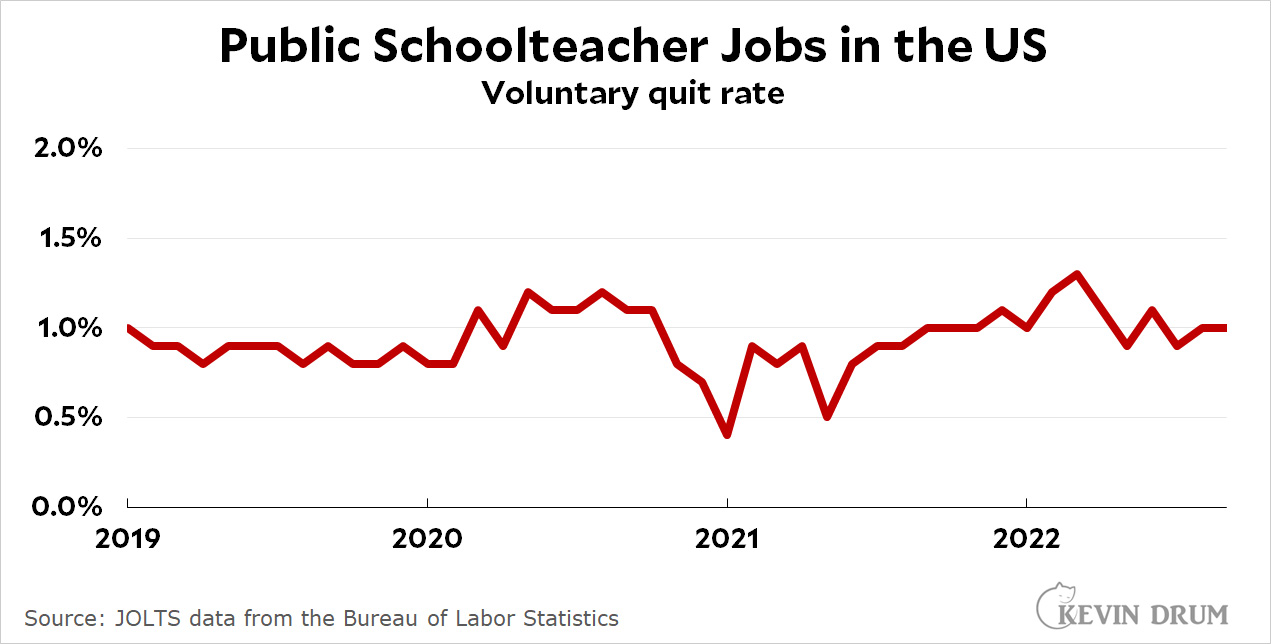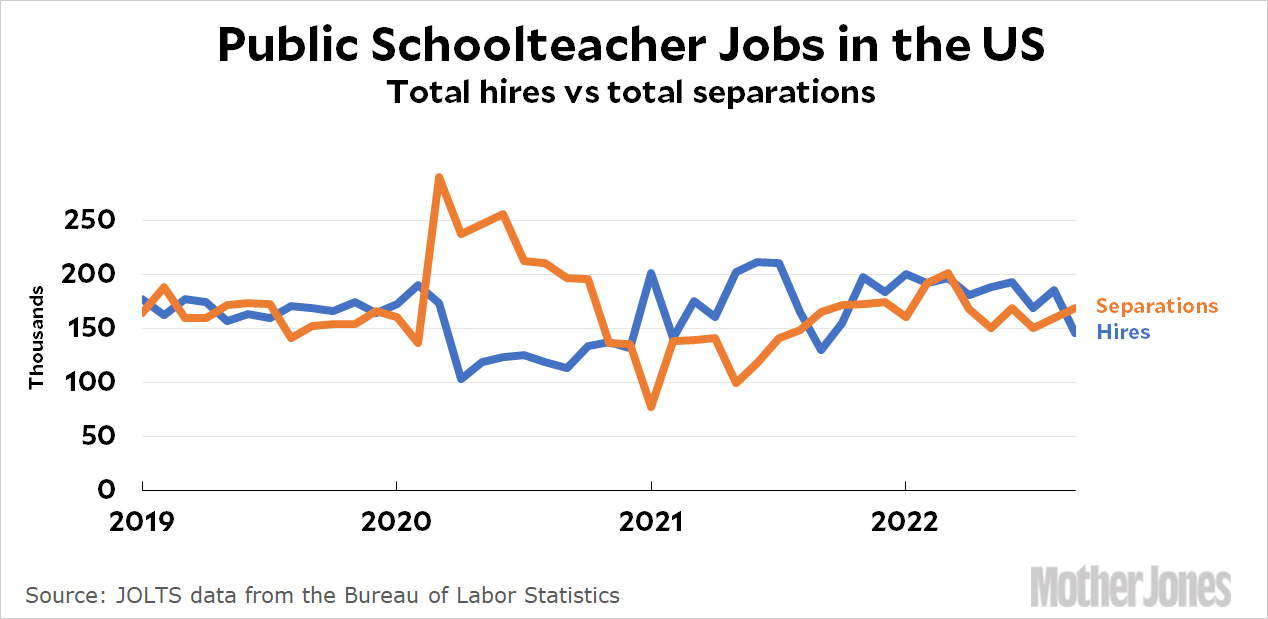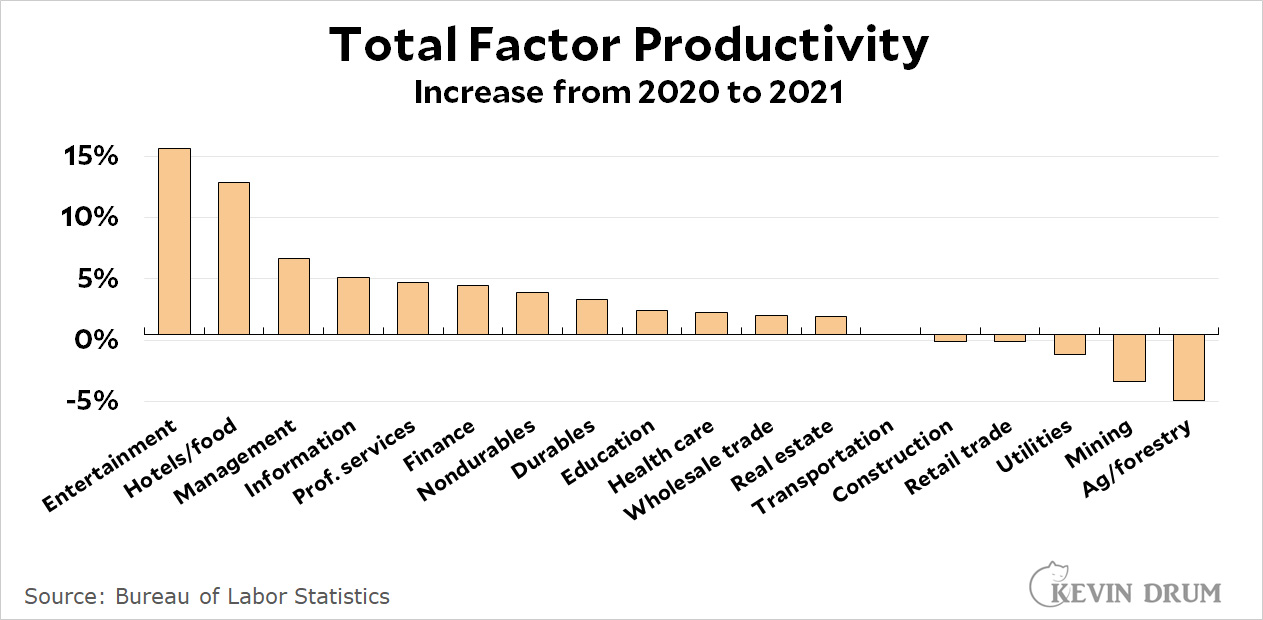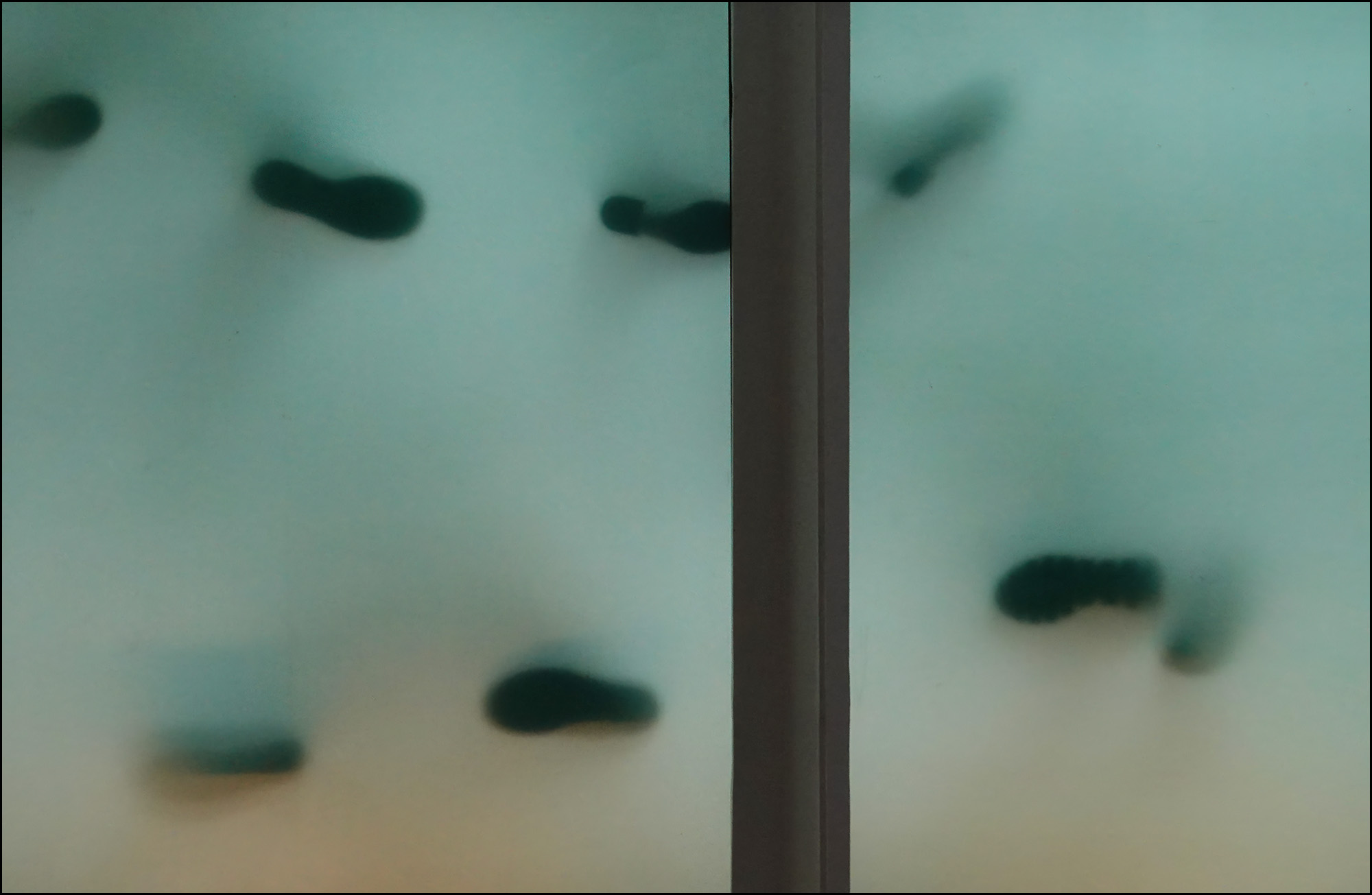The New York Times tells us yet again that American education is in crisis:
A survey of National Education Association members at the beginning of the year revealed an unsettling truth: More than half of the respondents said they were looking for a way out. That’s an astounding number of unhappy teachers. If they all quit, it would leave millions of students in the lurch.
But were these just empty threats? At the start of this school year, we spoke to over 50 educators in almost 20 states to find out. The picture they painted was far bleaker than we could have imagined: Empty classrooms, kids in crisis, and teachers who can’t survive another day on the job — that’s the reality of American education today.
There is probably no force in the universe that can stop the Times and other big news outlets from publishing this drivel. But I can keep trying. Here's a chart that's different from others I've published on this subject, but amazingly says the exact same thing:
 There is no tsunami of teachers quitting. The quit rate has been flat for the past few years and this year it's down. The average quit rate in 2022 is within a tenth of a point of the average rate in 2019.
There is no tsunami of teachers quitting. The quit rate has been flat for the past few years and this year it's down. The average quit rate in 2022 is within a tenth of a point of the average rate in 2019.
Now this:
 There is no massive outbreak of unfilled job openings. Over the past five years, total K-12 student enrollment has been absolutely flat and the number of new teacher hires has been precisely the same as total separations.
There is no massive outbreak of unfilled job openings. Over the past five years, total K-12 student enrollment has been absolutely flat and the number of new teacher hires has been precisely the same as total separations.
The number of unfilled job openings is higher than it used to be, but this is most likely due to an increase in indirect teaching jobs: diversity coordinators, special ed supervisors, senior mentors, etc.
I need to be very clear here: None of this means there are no problems in our schools. None of this means teachers don't have legitimate gripes. And none of it means there are no teacher shortages anywhere.
But it does mean that the story is not the catastrophic, pandemic-fueled one that news outlets are so fond of. Teachers are not quitting en masse. They are probably no less happy than ever. And staffing levels are about the same as they've been for the past five years. Whatever problems we have are mostly of long standing.
 Sweden is a little better than average, though still behind the other Nordic countries. In any case, this doesn't demonstrate that Sweden's loose approach to countermeasures was ideal, but it does suggest that it didn't do much harm.
Sweden is a little better than average, though still behind the other Nordic countries. In any case, this doesn't demonstrate that Sweden's loose approach to countermeasures was ideal, but it does suggest that it didn't do much harm.






